-
*Astrella.
User deleted
The Vatican’s time machine..the Chronovisor
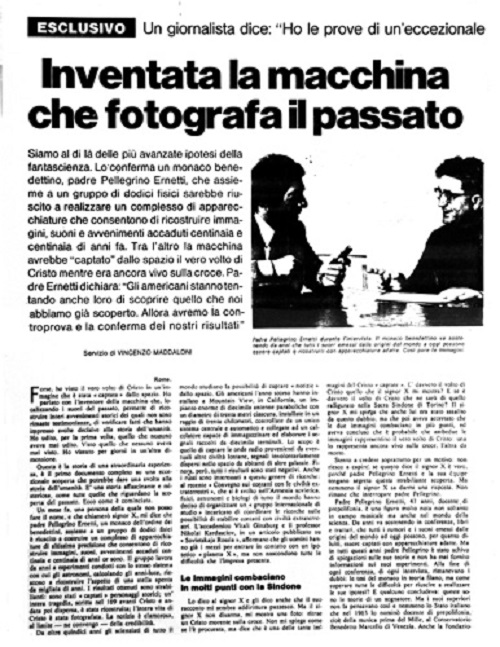
Chronovisor was the name given to a machine that was said to be capable of viewing past and future events. Its existence was alleged by François Brune, author of several books on paranormal phenomena and religion. In his book The Vatican’s New Mystery he claimed that the device had been built by the Italian priest and scientist Father Pellegrino Maria Ernetti (1925-1994). While Father Ernetti was a real person, the existence (much less the functionality) of the chronovisor has never been confirmed.
In the early 1960s Ernetti stated to François Brune, himself a Roman Catholic priest and author, that Ernetti helped to construct the machine as part of a team which included twelve world-famous scientists, of whom he named two, Enrico Fermi and Wernher von Braun. The chronovisor was portrayed as a large cabinet with a normal cathode ray tube for viewing the received events and a series of buttons, levers, and other controls for selecting the time and the location to be viewed. It could also focus and track specific people. According to its inventor, it worked by receiving, decoding and reproducing the electromagnetic radiation left behind from past events, though it could also pick up sound waves.
Ernetti lacked hard evidence for these claims. He said that he observed, among other historical events, Christ’s crucifixion and photographed it. A photo of this, Ernetti said, appeared in the May 2, 1972 issue of La Domenica del Corriere, an Italian weekly news magazine. However, a near-identical (though mirrored left to right) photograph of a wood carving by the sculptor Cullot Valera, turned up, casting doubt upon Ernetti’s statement.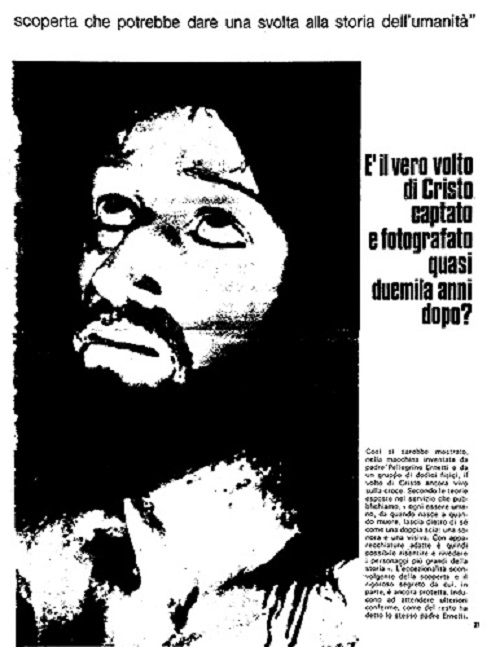
Through the chronovisor, Ernetti said that he had witnessed, among other scenes, a performance in Rome in 169 BC of the lost tragedy, Thyestes, by the father of Latin poetry, Quintus Ennius. Dr. Katherine Owen Eldred of Princeton University, the translator of an English rendition of the text, included as an appendix to the American printing of Peter Krassa’s book on the Chronovisor (see below), believes that Ernetti wrote the play himself. According to the alleged “confession” (purportedly kept anonymous on the request of the person, said to be a relative of Ernetti’s) included in the American edition, on his deathbed had Ernetti confessed that he had written the text of the play himself, and that the “photo” of Christ was indeed a “lie”. According to the same “source”, however, Ernetti also affirmed that the machine was workable.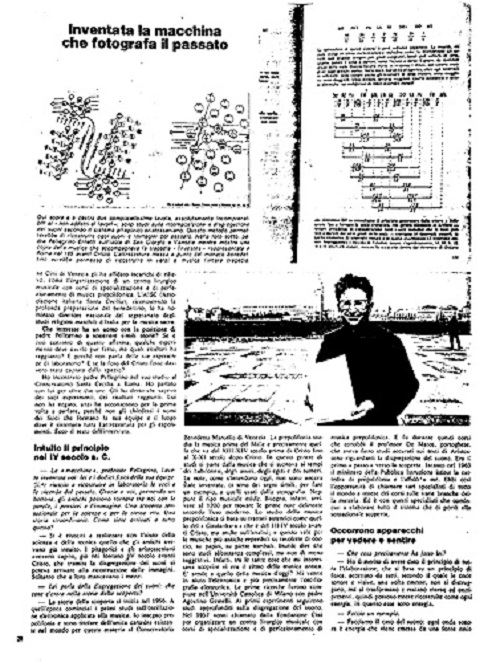
Brune does not believe Ernetti’s “confession” and is convinced that the authorities had coerced Ernetti into making a false confession.
The alleged existence of the chronovisor has fueled a whole series of conspiracy theories, such as that the device was seized and is actually used by the Vatican or by those that secretly control the world.
The Missing Time Machine
An eccentric priest claimed he had a machine that could see into the past. Was his story folly or fancy?
In his little 12 by 12 foot monastic cell Father Pellegrino Ernetti greeted Father Francois Brune one afternoon in the early 1960′s. The two men had just met for the first time the day before during a ferry ride across Venice’s Grand Canal. During their short conversation, Father Ernetti had said something that stuck in Father Brune’s mind. The two, who were both experts on ancient languages, were talking about scriptural interpretation when Father Ernetti remarked that there existed a machine that could easily answer all their questions.
Father Brune was puzzled about what kind of machine could do such a thing and resolved to bring it up again with Father Ernetti in that day’s meeting. When asked about it, Father Ernetti described a device he called a “chronovisor” that looked a bit like a television. Instead of receiving broadcasts from local transmission stations, however, the chronovisor could tune into the past to allow the viewer to see and hear events that had occurred years or even centuries earlier. Father Ernetti told Brune that the machine worked by detecting all the sights and sounds that humanity had made that still floated through space. Father Brune wanted to know if Father Ernetti and his collaborators had been able to see the crucifixion of Christ. Ernetti replied, “We saw everything. The agony in the garden, the betrayal of Judas, the trial – Calvary.”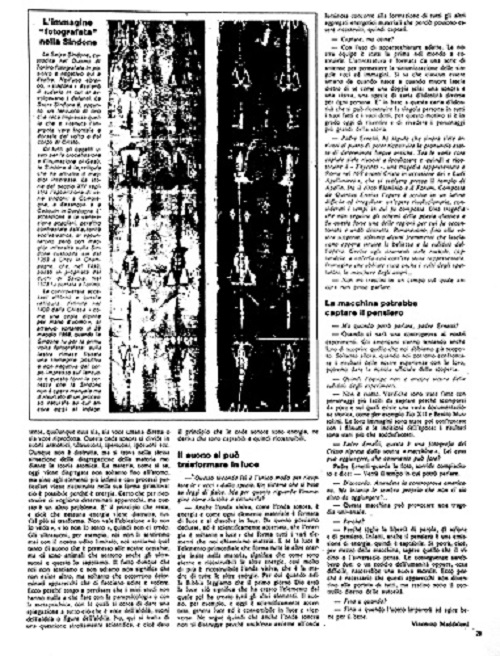
Everyday Chronovisors
What Father Ernetti was describing to Brune, the chronovisor, was a type of time machine. It is unlike the fictional devices found in most popular books, TV shows and movies, however, that transport people into the future or past. This type of time machine would bring pictures and sounds from the past into the present. Time machines that transport people seem far beyond anything our technology can currently build, but what about a device that just deals with images and sounds? Could a machine like Father Ernetti described be built?
We actually use crude versions of chronovisors every day. A security camera hooked to a video recorder will enable us to see into the past. Even something as a simple as mirror is really a type of chronovisor. We don’t see ourselves in the mirror as we currently are, but as we were just a few millionths of a second before: the time it takes the light to travel from our face to the mirror, reflect off and return to our eyes.
Large telescopes also act as chronovisors. The distant galaxies we view through these devices do not actually look like they are today, but as they appeared when the light left them millions, or perhaps billions of years ago. If an alien scientist on a planet one-hundred light years away had a powerful enough telescope that he could view activities on Earth he wouldn’t see recent events, but life as it was a century ago. He would see the Wright Brothers invention of the airplane, not the launch of a space shuttle.
If it is possible to see into the past of a distant galaxy using a telescope, why can’t a device be built that would allow us to peer into history here back on Earth?
Undoubtedly such as device would be much more complicated than even the most advanced telescope. Telescopes can see back in time, but what part of history they view is entirely a function of how far away the object is. A star 500 light-years away can only be seen as it was five centuries ago, not as it was a hundred years later or earlier than that. And, of course, they can only view what is visible from earth. We cannot see what is on the far side of the Crab Nebula no matter how much we are interested in what it looks like. The device described by Father Ernetti, however, seemed to be able to tune into almost any era and any location.
The Secret Team of Scientists
How did the priest get a hold of such a fantastic machine? According to what he told Brune, he had been working with a Father Agostino Gemelli at the Catholic University of Milan trying to filter harmonics out of Georgoian chants when they heard the voice of Gemelli’s late father speaking to them on the wire recorder they were using (Gemelli later confirmed this incident). This got the priest thinking about what happened to all the sights and sounds humans make. Did they disappear completely or do they continue to exist in some way? Ernetti approached some eminent scientists and assembled a team to work on the project. The group inclided Enrico Fermi (one of the designers of the first atomic bomb) and Wernher von Braun (the German rocket scientist).
The team built the chronovisor so it could tune into any time or place. They observed not only the crucifixion of Christ, but French conqueror Napoleon, the Roman philosopher Cicero, and the play Thyestes by the Roman poet Quintus Ennius.
Brune was astonished that he had not heard of the invention of this device. “Why hide such a discovery?” he asked.
Father Ernetti replied that the team had decided to voluntarily dismantle the device. Since it could tune into any place at any time in the past it left no room for privacy. In the wrong hands, Ernetti said, it could create the “most fearsome dictatorship the world has ever seen.”
Father Ernetti also spoke at some conferences on paranormal phenomena discussing his machine. While he never produced the device itself, he was eventually coaxed into displaying some forms of proof. The first was the text of the play Thyestes.
Father Ernetti’s Proof
The play Thyestes was written by Quintus Ennius who was born 239 B.C. in what is now Calabria, Italy. Ennius is sometimes called the “Father of Latin Poetry” and over the course of his lifetime he wrote about 20 plays and an epic poem on the history of Rome called Annals. Only a few fragments of his work survive. His last play Thyestes was produced only shortly before his death in 169 B.C.. Scholars have wondered about this play for centuries. Though they know what the story was about based on the writings of the first century author Seneca, the actual text, except for a few lines, has been lost to history.
Sometime in the late 60′s a Professor Giuseppe Marasca became interested in the stories he was reading about Father Ernetti and his machine. Marasca contacted Ernetti and eventually they became friends. Ernetti promised to show Marasca his machine, but never did. What he did present to the professor was a handwritten manuscript of what he indicated was the complete play, Thyestes, that he had supposedly copied down while watching the chronovisor. Marasca held onto the text for a number of years, refusing to show it to anybody. Eventually he passed copies to select individuals including Father Brune.
A second piece of evidence that Father Ernetti released was a picture of Christ’s face while he was on the cross, apparently photographed through the chronovisor. The photo shows the face of a bearded man with upturned eyes. It wasn’t long, however, before someone noticed that the picture was identical (except being reversed left-to-right) to one sold at the Sanctuary of Merciful Love in Collevalenza, Italy. The photograph shows a wooden carving of Jesus in the sanctuary by the Spanish artist Cullot Valera.
After this revelation Father Ernetti said little more about the photograph and the chronovisor. He died in 1994.
As for the manuscript of Thyestes that he said he had transcribed from watching the play on the chronovisor, it seems too short – only 120 lines – for it to be the full play. Most plays of this type would have been ten times as long. Dr. Katherine Owen Eldred of Princeton University, an expert on the play who translated the manuscript for the American edition of the book Father Ernetti’s Chronovisor, suspects that isn’t authentic. Many of the words used in this manuscript didn’t appear in the Latin language until over two centuries after the play was first performed. The type of words and the way they are repeated also suggest that the person who composed the manuscript had limited skills in Latin. As Ennius, the playwright, was using his native language this seems very strange. This makes one wonder if the author wasn’t Ennius, but Father Ernetti himself.
The Enigma of Father Ernetti
What can we make of this strange story? It would be easy to dismiss Father Ernetti as a crackpot or compulsive liar. Outside of his entanglement with the chronovisor, however, Father Ernetti was an extremely respected, but quiet, intellectual whose specialty was archaic music. He spent most of his life doing research and teaching on this subject and was the author of such respected books as Words, Music, Rhythm and the multi-volume work General Treatise on Gregrian Chant. Why would such a respected clergyman, academic and author make up such a wild story?
After the Father’s death the editors of Father Ernetti’s Chronovisor received a document from someone claiming to be a relative of Ernetti but wishing to remain anonymous. The document tells of how this relative was called to Ernetti’s deathbed and the priest confessed that he had made up the play and falsified the picture. However, Ernetti continued to insist that the chronovisor actually worked.
Since the document is anonymous it is hard to know how much faith to place in it. Father Brune, Ernetti’s long time friend, believes that the chronovisor existed, but Ernetti came under pressure from his superiors in the last years of his life not to talk about it. Brune thinks the resemblance of the picture to the statue can be explained by the artist carving the work under the direction of a nun who had a vision. In the vision she saw Christ hanging on the cross and described it to the artist. The artist translated her vision exactly into the sculpture. The sculpture and the photo look alike because they both are true representations of Christ’s face. One coming to us via the chronovisor, the other through the nun’s vision, suggested Brune.
We may never be able to prove that the story of Ernetti’s chronovisor was false, but with our technical capabilities expanding continually might it be possible to someday build such a device?
Paleoacoustics
Trying to gather the remnants of electromagnetic waves left over in the environment and reassemble them into a coherent image seems an overwhelming task, even with the most advanced computers. Some scientists have speculated, however, that we may find past sounds preserved in the environment. They’ve even given this speculative branch of science a name: Paleoacoustics.
The idea is that sound waves might have been recorded and preserved by accident. One possible way this could happen would be during the creation of pottery. In theory, a clay vessel spun on a potter’s wheel and given a spiral pattern with a stylus would act like a primitive phonograph. On early phonographs, sounds were preserved by using a tin (or later wax) cylinder spun with a needle, etching a spiral groove down the surface of the cylinder. The needle would pick up sounds waves and etch the vibrations into the grooves. When the needle traveled down the groove a second time, the effect would reverse itself and the needle would vibrate, playing back the recorded sound.
On the pottery wheel the soft clay of the pot would act as the recording medium and the stylus as the needle. In theory the sound vibrations could be etched into the clay. Given that this method of creating pottery has been around for thousands of years this technique seems to hold out the promise of bringing back sounds from the ancient past.
Though this idea for recovering ancient sounds has been around since it was proposed by Richard G. Woodbridge in a letter to Proceedings of the IEEE in 1969, nobody has yet been successful in recovering ancient sounds (a hoax in 2006 suggesting Belgian researchers had accomplished this with a 2,000 year old piece of pottery fooled a number of people as it made the rounds through various newspapers and across the internet). However, as our instruments become more sensitive and our computers more powerful we may yet see success with this type of investigation.
Still, if these techniques are successful they would still be a far cry from Ernetti’s chronovisor which could tune into the past at any place or time. Will we ever be able to build a machine like he described? Only time will tell.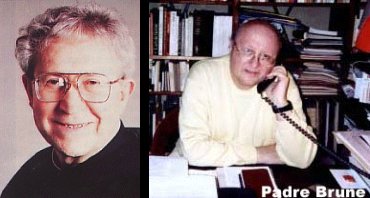
Source: http://risvegliodiunadea.altervista.org/wp...ronovisore1.jpg.
The Vatican’s time machine..the Chronovisor6 Febbraio 2014 |


